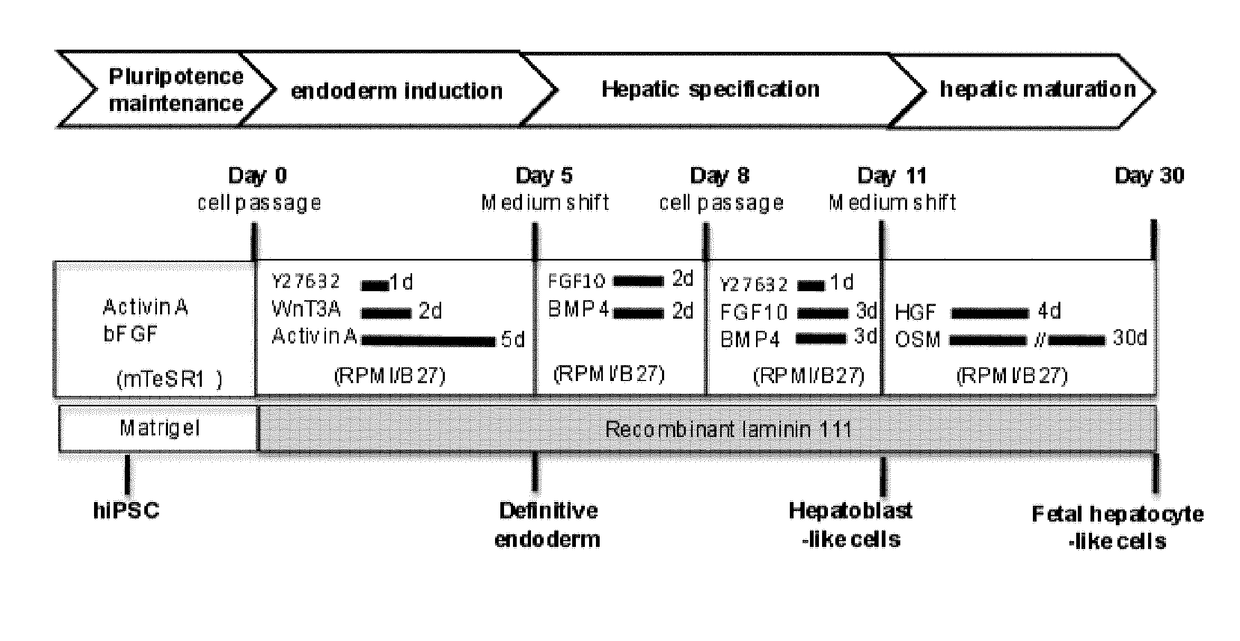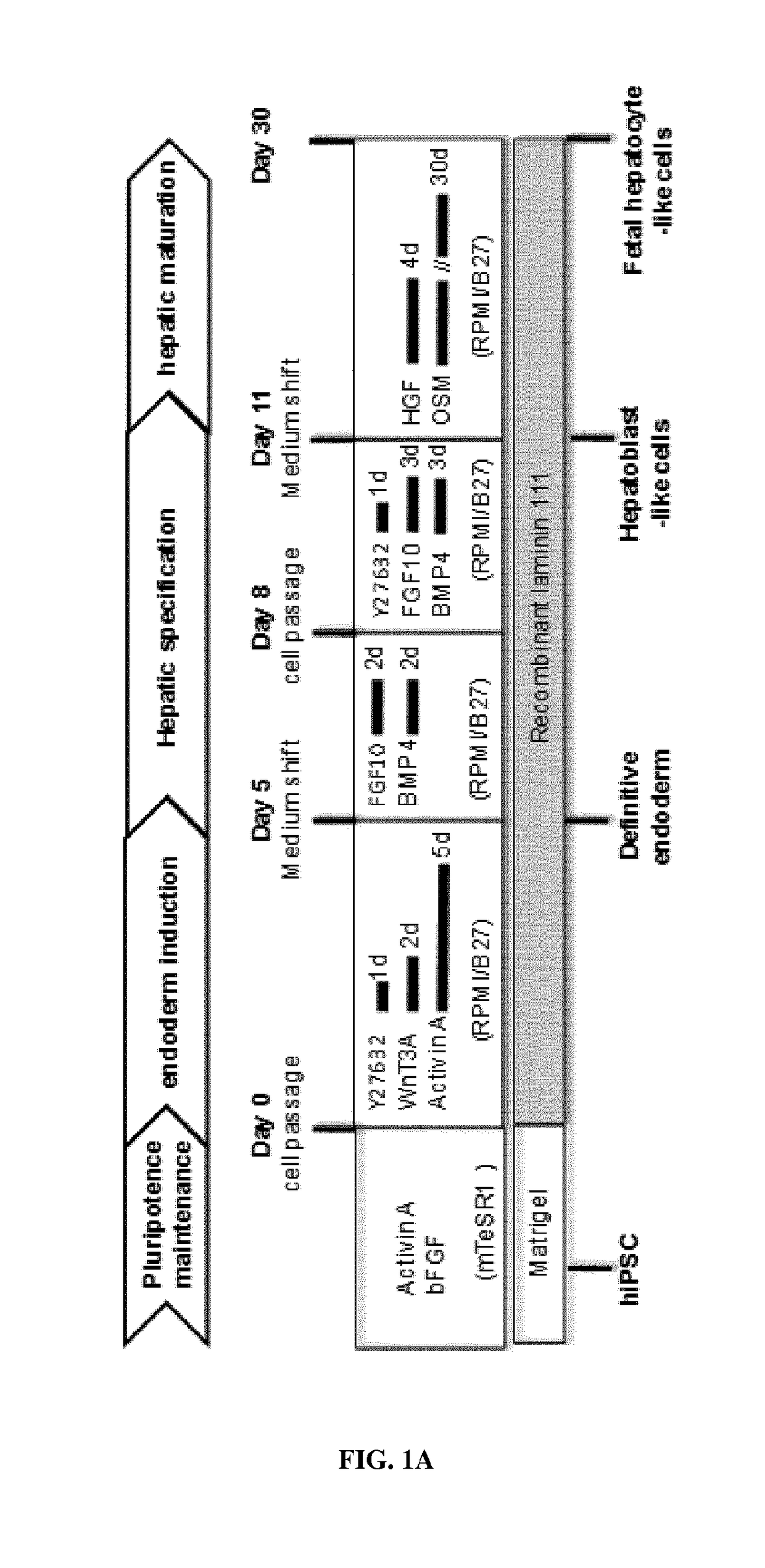Use of a laminin for differentiating pluripotent cells into hepatocyte lineage cells
a technology of hepatocyte lineage cells and laminin, which is applied in the field of cell differentiation and cell therapy, can solve the problems of rapid dedifferentiation, inability to expand in culture, and increase in the number of patients on the waiting list for liver transplantation (about 10%), and achieve the effect of improving differentiation
- Summary
- Abstract
- Description
- Claims
- Application Information
AI Technical Summary
Benefits of technology
Problems solved by technology
Method used
Image
Examples
example 1
Use of LN-111 as a Matrix for Differentiating Pluripotent Cells into Hepatocyte Lineage Cells and Use of Hepatoblast-Like Cells-Like Cells Thus Obtained in Therapy
[0293]Material & Methods
[0294]This study was performed in agreement with the French and European regulations.
[0295]Maintenance of hIPSC: The BBHX8 hiPSC [46] lines was maintained on Matrigel (BD Biosciences, San Jose, Calif., USA)-coated culture wells in mTeSR1 (Stemcell Technologies, Vancouver, BC, Canada) at 37° C. in a 5% CO2 incubator with daily medium changes. Cells were passaged every 5-7 day with Gentle Cell Dissociation Reagent (Stemcell Technologies, Vancouver, BC, Canada).
[0296]Hepatic Differentiation in vitro: Hepatic differentiation of human pluripotent stem cells was performed following a three-step protocol based on previous studies [16, 20, 40] with some modifications. First, for definitive endoderm differentiation, cells were harvested using TrypLE (Life Technologies, Carlsbad, Calif., USA), counted using A...
example 2
Use of LN-521 as a Matrix for Differentiating Pluripotent Cells into Hepatocyte Lineage Cells
[0320]Interestingly, recombinant human laminin-521 (LN-521) can substitute LN-111 as extracellular matrix and allowed better differentiation of hiPSC into definitive endoderm and HLCs derived from hiPSCs as assessed by RT-qPCR analyses of HNF4alpha, AFP, Albumin, AAT expression gene expression. For instance, we observed higher expression of SOX17 (endoderm) at day 5 of differentiation, higher expression of HNF4alpha, AFP and albumin from day 11 to day 30, as assessed by sybregreen based-RT-qPCR (FIG. 3). These results were confirmed using Taqman-based RT-qPCR for HLCs derived from hiPSC (FIG. 7) and HLCs derived from hESCs (ESI-017 cell line) (FIG. 8).
[0321]When CHIR 99021 was added for 24 h at day 0 of the hepatic differentiation process, the difference between LN-521 and LN-111 is more pronounced (FIG. 8).
[0322]Interestingly, when we used a mix of LN-521 and LN-111 (25% / 75%), hepatic diffe...
PUM
| Property | Measurement | Unit |
|---|---|---|
| concentration | aaaaa | aaaaa |
| concentration | aaaaa | aaaaa |
| concentration | aaaaa | aaaaa |
Abstract
Description
Claims
Application Information
 Login to View More
Login to View More - R&D
- Intellectual Property
- Life Sciences
- Materials
- Tech Scout
- Unparalleled Data Quality
- Higher Quality Content
- 60% Fewer Hallucinations
Browse by: Latest US Patents, China's latest patents, Technical Efficacy Thesaurus, Application Domain, Technology Topic, Popular Technical Reports.
© 2025 PatSnap. All rights reserved.Legal|Privacy policy|Modern Slavery Act Transparency Statement|Sitemap|About US| Contact US: help@patsnap.com



